Mistreated racing dog finally returns home from 'concrete hell hole'
He didn’t know it, but a thin black and white dog with timid brown eyes made history when he took his first steps out of quarantine and onto Australian soil at Melbourne International Airport.
The greyhound, named Famous Dog, and the four other dogs who were released from quarantine that day, are the only Australian racing canines to ever return from the notorious Canidrome in Macau, an autonomous region on the south coast of China.
An estimated 20,000 dogs from Australia have been sent to the race track in the gambling hub.
The track’s reputation was so bad it was blacklisted by Australia’s Greyhound Racing industry in 2013 when an investigation by the South China Morning Post revealed the Canidrome was killing 30 greyhounds a month.
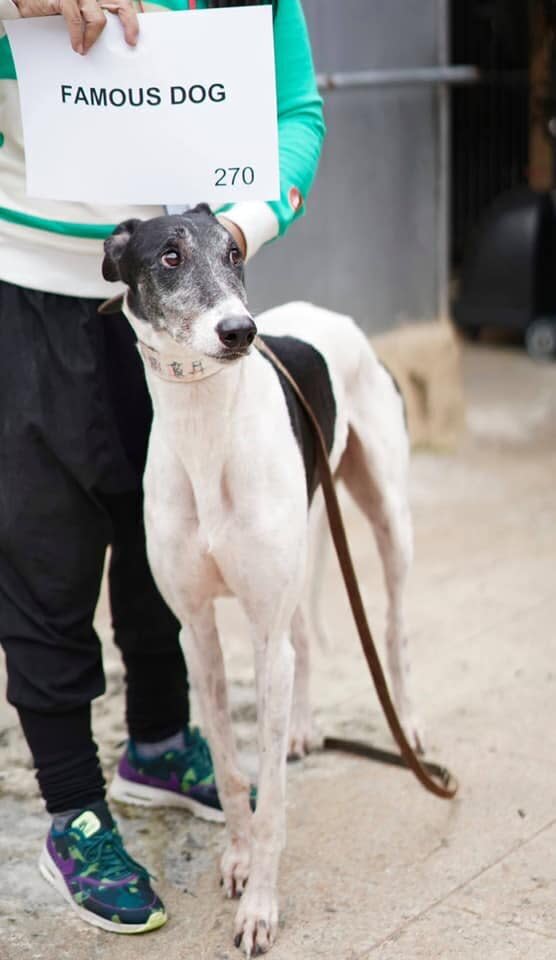
Famous Dog’s years away have taken a significant toll.
All his teeth are brown and rotting and need urgent extraction, his body is so underweight the vertebrae of his spine protrude at sharp angles through his skin, as do many of the bones of his ribcage.
His companions have not fared any better.
One of the other dogs, named Yahto Keroma, needs to have a toe amputated. The ears of another dog, Not Easy, are partially missing and frayed at the edges after they were either ripped or chewed off.
The remaining two, Collision Doll and News Time, similarly have bodies that are a testament to years of neglect and poor nutrition.
Australian rescue groups Greyt Greys, Gumtree Greys and Greyhounds Rehoming Cairns and Tablelands District are among the organisations responsible for bringing the five dogs home.
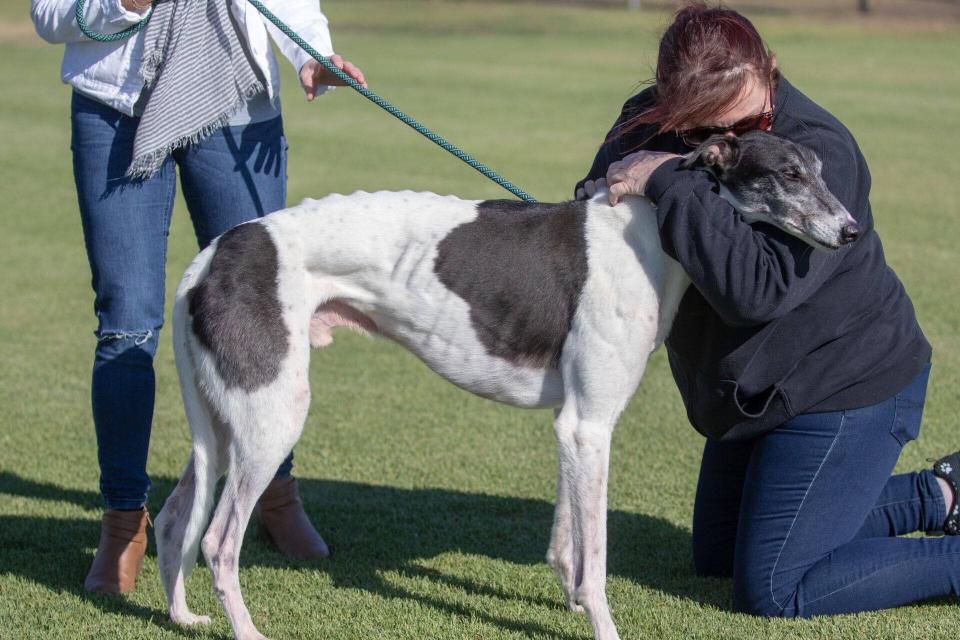
The welfare groups acknowledge it would have been far cheaper and significantly easier to have sent them to destinations with more lenient quarantine and bio-security laws, but they feel bringing them home makes an important statement.
“The [dogs] can do a lot of good coming back here,” John Morgan of the rescue group, Greyt Greys, told Yahoo News Australia.
“It will get a lot of people asking questions about what happened and maybe stop something like this happening again.”
Greyt Greys is run by John Morgan and his wife out of their south Gippsland home. Mr Morgan tells Yahoo News Australia that dogs that were sent to the Canidrome were “sent to certain death”.
That all changed in June 2018 when seven years of lobbying by animal welfare groups, primarily the Macau-based Anima, saw the track closed for good.
However, the closure meant 532 dogs that the Canidrome still owned were left languishing at the track — nearly all of them had been born in Australia.
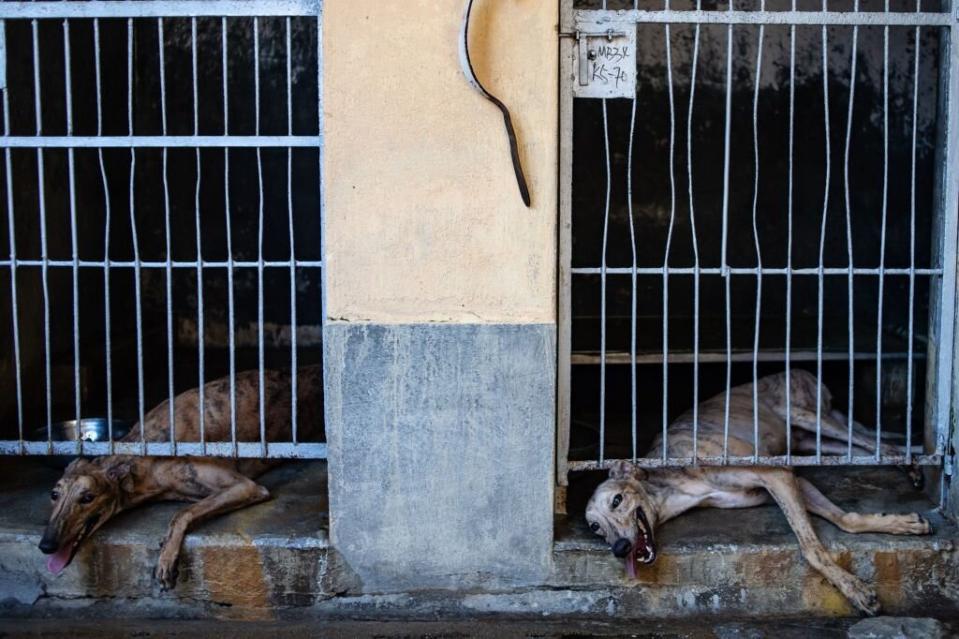
“The thing about the Canidrome is if a dog didn’t place in the top three for five consecutive races, it was normally killed. And not in humane ways either,” Mr Morgan said.
“No dog, up until the time it closed down, no dog ever made it out of that track alive.”
He explained the decision to bring the dogs back to Australia was a “symbolic” one by both the local rescues and Anima director Albano Martins, who spearheaded the campaign get the racetrack closed down.
“It was a conscious decision by Anima [and] Albano Martins. He said: ‘these dogs have come from Australia, we need to get some of them back there’,” Mr Morgan said.
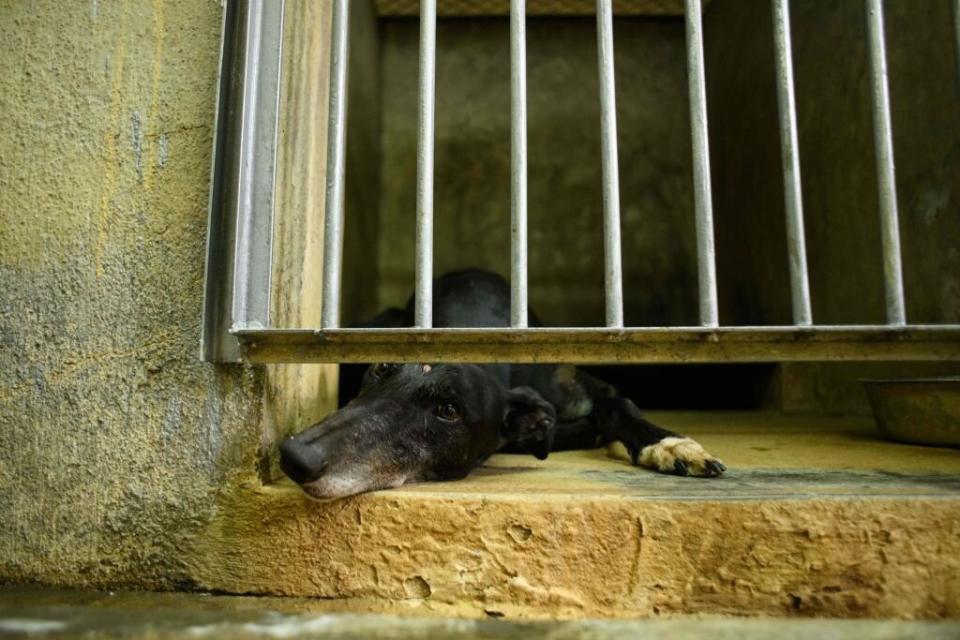
“[The dogs] symbolise all that was bad about the place,” he added, explaining the rescue groups hoped the dogs’ story could be used “to educate people and let them know that this happened”.
“And put a bit of pressure on the racing industry to clean up its act.”
‘Like a concrete, metal prison’
Following the forced closure of the race track, responsibility for the welfare of dogs was handed to Anima, and its volunteers ventured into the concrete enclosure where the animals were housed, sometimes 70 to a pen, to see them for the first time.
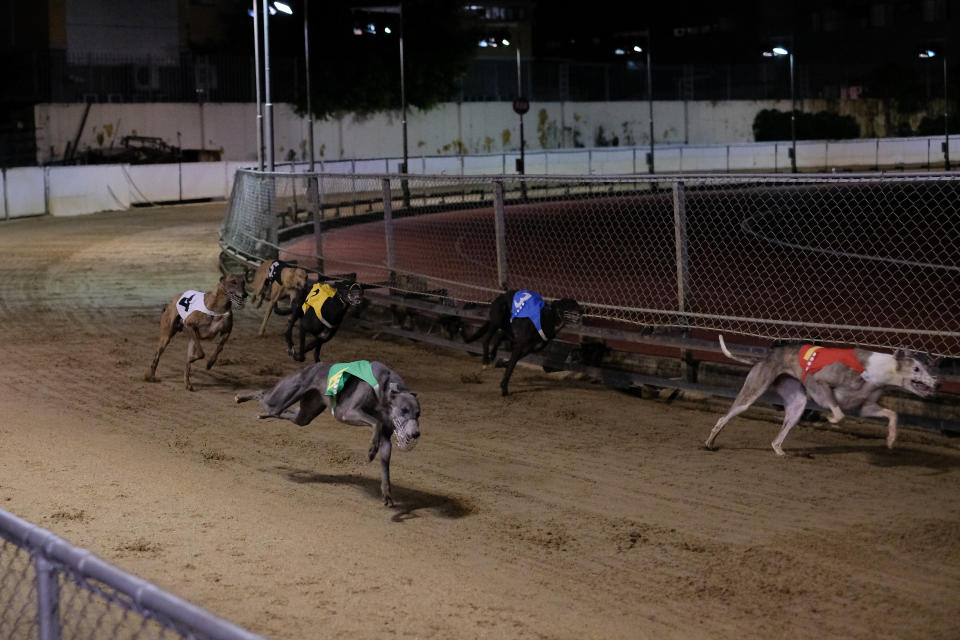
They found hundreds of greyhounds living in “shocking” conditions.
Some of them were as old as 10 and 12 years and yet the Canidrome had continued to race them. Thirty-three of the dogs had skin diseases.
Less than a year on, 17 of the abandoned dogs that were found languishing in the kennels have died, Mr Morgan said.
“It was like a concrete, metal prison. [It] was dark, damp and with big metal bars that resembled a prison,” he said.
Chilling final post emerges after Slipknot drummer's daughter's tragic death
Man, 22, strip searched at festival after chewing gum mix-up
Woman and child found dead at Mt Keira lookout near Wollongong
“Most of the dogs have wounds on their bodies [that are] pressure sores from lying on hard surfaces. They’ve got issues. They’ve all got shocking teeth.”
Even though Greyhounds Australasia blacklisted Macau as a destination for greyhound exports in 2013, documents leaked last year revealed the Australian federal government had allowed 590 greyhounds to be sent there in the two years following the ban.
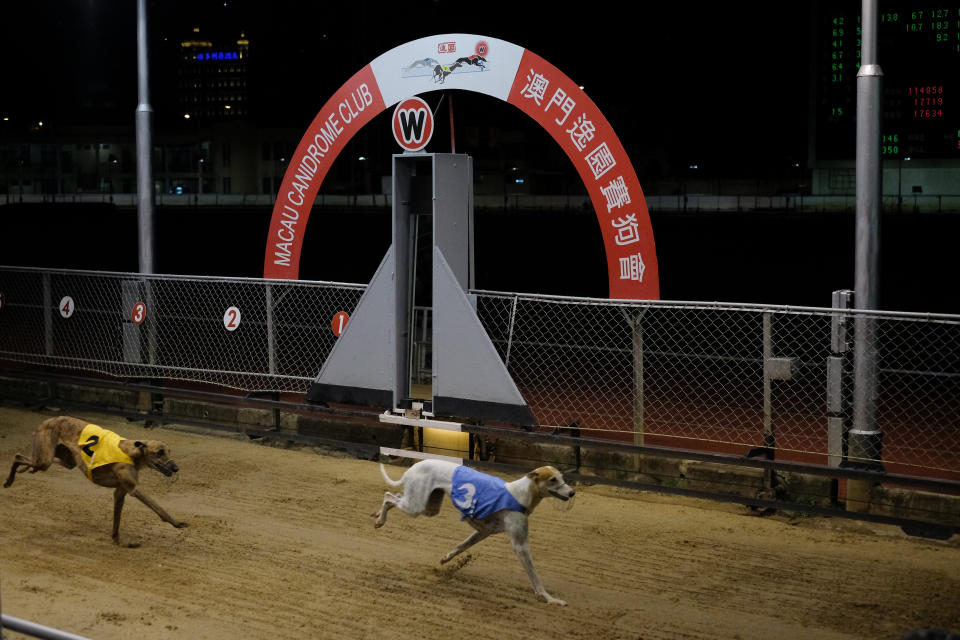
The Australian Department of Agriculture previously told media that once exported dogs reached their destination, “they come under the jurisdiction of the importing country”.
20,000 Australian dogs sent to ‘hell’
“These dogs have been to hell and back during their time in Macau,” Mr Morgan said.
“It is estimated that over 20,000 greyhounds were sent to their deaths over a 50-year period and most of them were sent from Australia.”
In addition to the five dogs that emerged from quarantine and into the care of Greyt Greys, Gumtree Greys and their foster carers on Friday morning, Mr Morgan said another 14 are due to be sent back over the next few weeks.
The rest of the Canidrome dogs have already found homes in the USA, UK and Europe, with a small number being adopted locally in Macau.
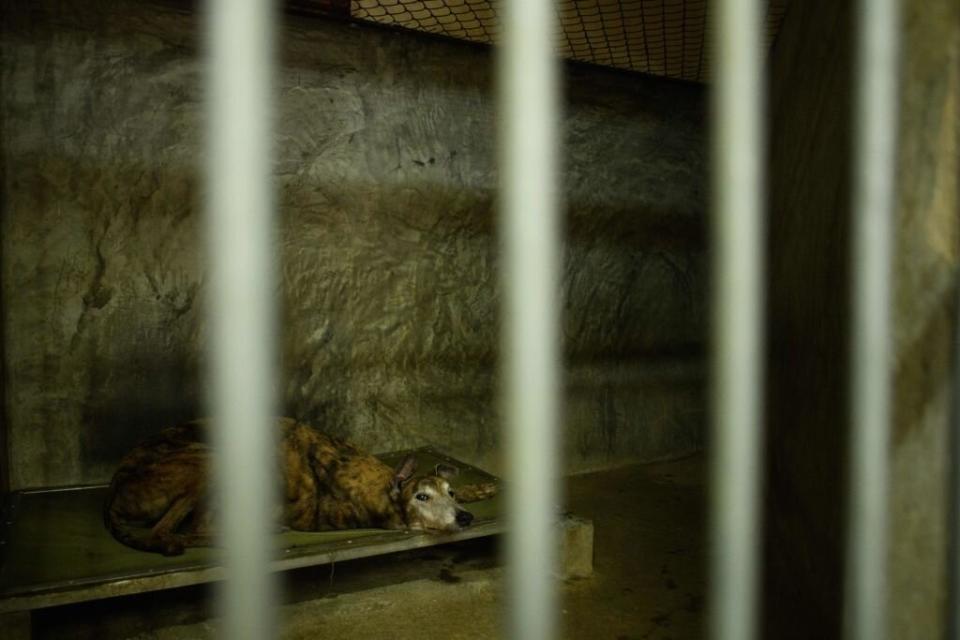
“Whilst the number coming back to Australia is very small, it represents something very positive for all those who campaigned tirelessly for the closure of Canidrome for so long,” Mr Morgan said.
The 2018 closure of Macau’s greyhound racing industry — which had long been the only place in Asia where it was legal — left Australia as one of the few countries that continues to allow commercial greyhound racing.
An explosive 2016 investigation by the ABC’s Four Corners program into Australia’s greyhound racing industry triggered an inquiry by the NSW Baird Government which found "systemic animal cruelty" in the industry, with large numbers of greyhounds being killed.
The ban which was subsequently put into place was short-lived though, due to intense lobbying from industry groups and trainers.
Home at last
It made for an emotional day when the only dogs to be sent to Macau returned home, Mr Morgan said.
Upon being collected from quarantine at Melbourne airport by Greyt Greys and Gumtree Greys the dogs were outfitted in specially-made onesies to ward off Victoria’s autumn chill and taken to the park for their first feel of grass beneath their paws in years.
The onesies are made especially by manufacturers Houndtees to pay tribute to the Canidrome dogs — both the ones which survived and the thousands who didn’t. All proceeds of the sales will go towards the five dogs’ ongoing vet bills.
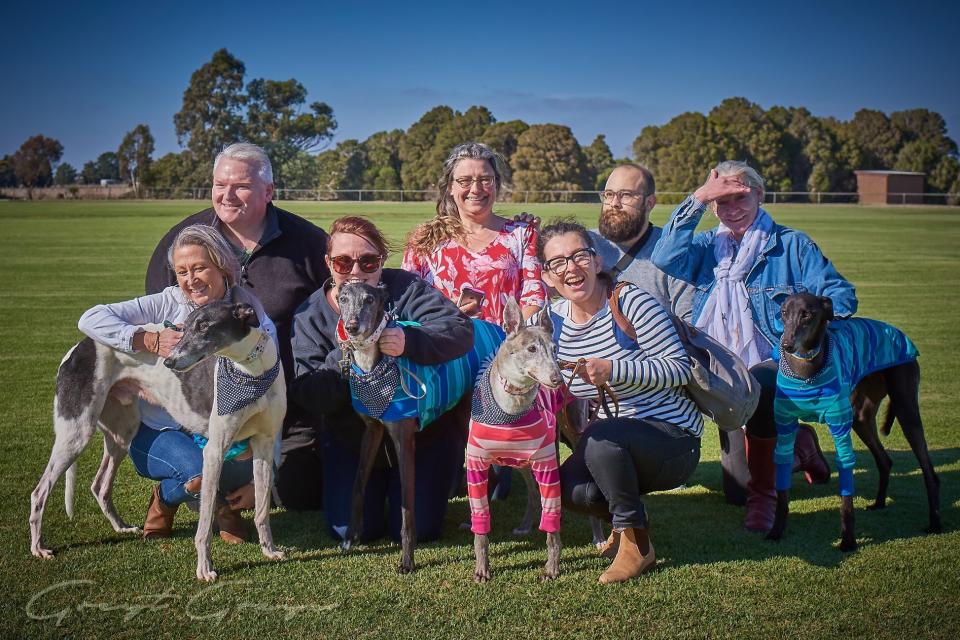
“The dogs were a little anxious at first, but we took them to a local park for the photos and they really came out of their shells,” Mr Morgan said.
While the dogs will now live very different lives from what they experienced in Macau, they all have long-term health problems requiring extensive medical treatment. Greyt Greys has subsequently set up a GoFundMe to help pay for the dogs’ vet bills.
Mr Morgan maintains it’s all worth it for the greyhounds though.
“They’re the most giving breed… They’re very affectionate. They’re just lovely,” he said.
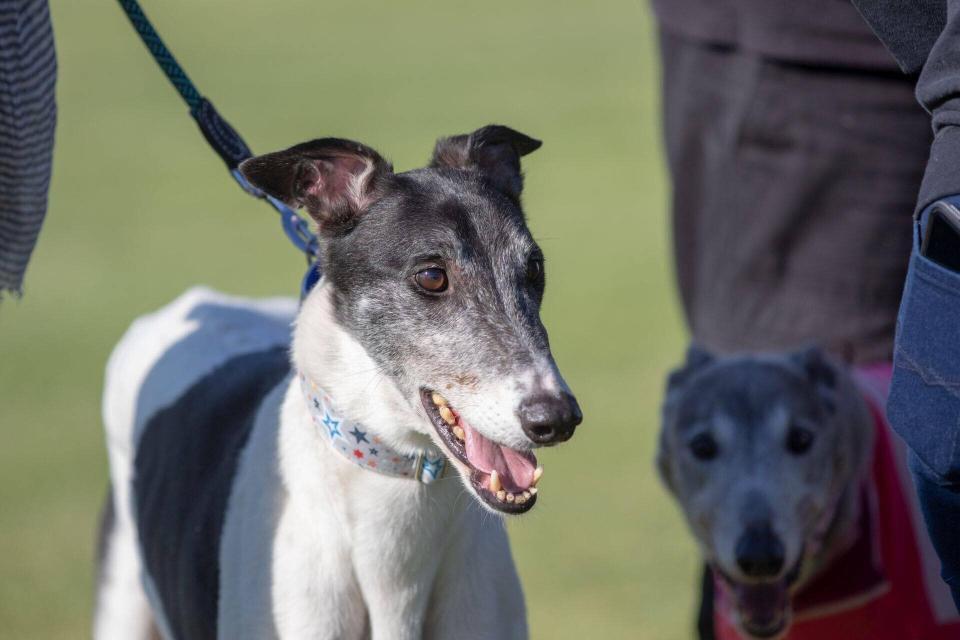
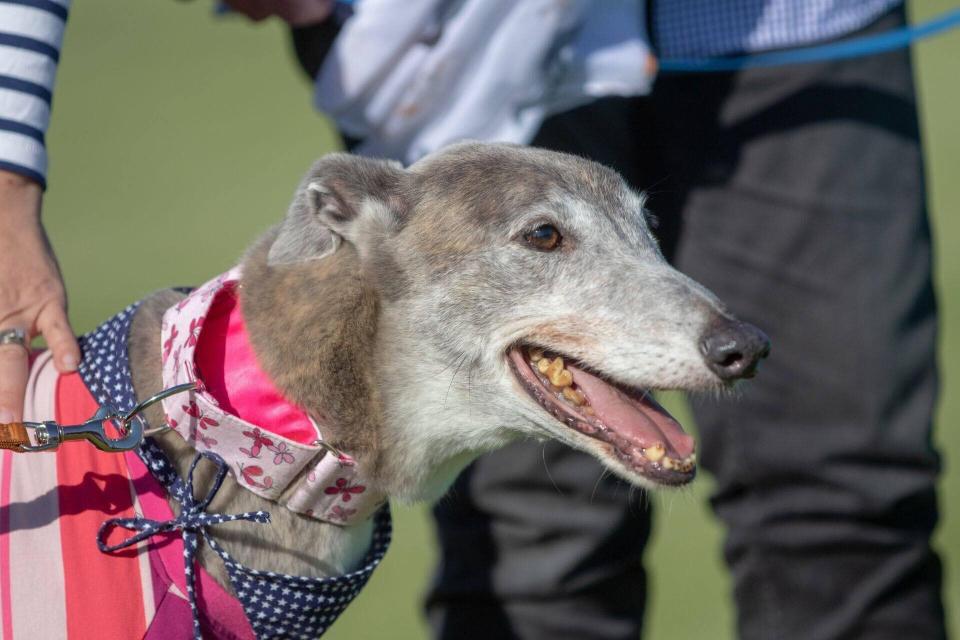
Some of the dogs have even been living in foster homes with small, white fluffy dogs — the type “you’d think would make a greyhound want to chase it”, but in every case the dogs have “gotten on so well”.
According to Mr Morgan, this is a common experience he’s had with ex-racing greyhounds after fostering more than 100 of them over the past three years, some of whom came to him from “horrific places”.
“It’s almost mind-blowing just how quickly greyhounds adapt,” he said, “They’re just beautiful.”
Do you have a story tip? Email: newsroomau@yahoonews.com.
You can also follow us on Facebook, download the Yahoo News appfrom iTunes or Google Play and stay up to date with the latest news with Yahoo’s daily newsletter. Sign up here.


